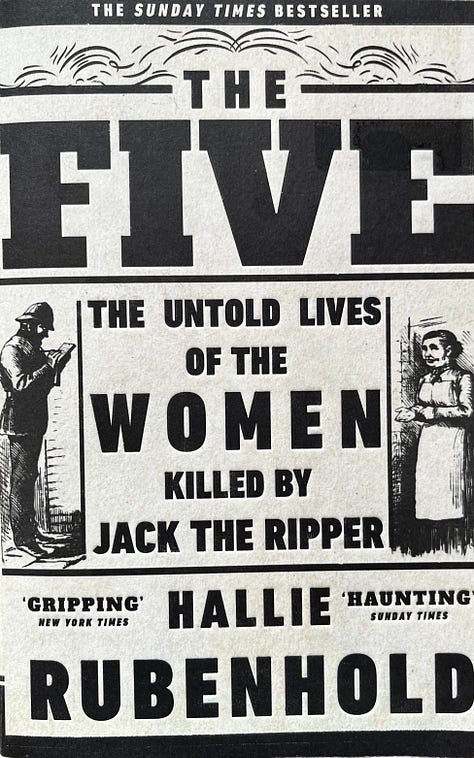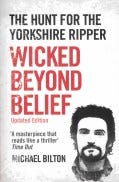20 of the best true-crime books: Part 2
More brilliant writing and extraordinary cases from non-fiction crime writers…



Wicked Beyond Belief by Michael Bilton 2012
Huge, detailed and finely written probe into the infamously badly run investigation to find the Yorkshire Ripper. Michael Bilton lays out all the vital data about the case, and interviews many who were involved. He reveals how the police operation got badly bogged down in wrong decisions and prejudiced thinking, allowing Peter Sutcliffe to continue his vile crimes. The book has been updated to include recent developments surrounding his incarceration. Incredibly, Sutcliffe had hoped to be freed.
Stephen Ward Was Innocent, OK? by Geoffrey Robertson 2013
If anyone thinks we Brits live a fair-minded democracy where the rule of law ensures justice for all, read this and learn the truth. When those in power are out to get someone, they get them, and the cover-up is total. Geoffrey Robertson is a KC who argues powerfully that Stephen Ward was the victim of a politically motivated act of vengeance. During the Profumo Scandal he was convicted of living off immoral earnings (Ward committed suicide after his trial). This book outlines the reasons for a legal appeal. It also exposes how the judicial establishment ganged up to ensure Ward did not get a fair trial.
The Stranger Beside Me by Ann Rule 1980
Ted Bundy has received a lot of media attention recently with the Netflix documentary and Zac Efron movie. The serial killer is one of the most grotesque murderers in recent history and Ann Rule was a writer able to offer a unique perspective on him. This was because she knew him and, chillingly, spent many evenings alone with him while volunteering on a suicide hotline. Once the horror of his crimes emerged, she was still in touch with him and writes about the handsome, caring figure she knew, as opposed to the vile killer of young women. I found her capacity to give him the benefit of the doubt for so long to be irritating and irrational. However, this is undoubtedly an unforgettable portrait of a rapacious, dead-souled murderer.
The Five by Hallie Rubenhold 2019
You have to love this book just for amount of outrage it produced among the Ripper fanboys and girls out there who want to protect the old cliches about this poster boy of serial killers. Historian Hallie Rubenhold’s superbly researched book eschewed the usual claptrap on these terrible crimes – the victims were ‘just prostitutes’, it was the Prince of Wales what done it, etc – for a serious exploration of the lives of the five victims – Polly, Annie, Elizabeth, Catherine and Mary-Jane. This gives the reader a shocking insight into Victorian society and the brutality that befell women facing economic hardship alone. Angry and heart-breaking.
My Dark Places by James Ellroy 1996
Ellroy has written some of the most blistering crime fiction of the past few decades, but here he delves into an appalling crime that overshadowed his own life. In June 1958, when he was 10 years old, his mother was found strangled to death. With ferocious honesty, Ellroy writes about his subsequent wayward teenage years and early adulthood as a petty criminal. He then explores how, when ready to confront his past, he joined forces with a veteran LA detective to re-open the unsolved case file on the murder of his mother. An unflinching account by the tormented son of a murder victim on a journey into America’s underbelly.
The Italian Boy by Sarah Wise 2005
A book that brings back to life a fascinating period in London’s dark past. It explores events in 1831 following the arrest of three body-snatchers put on trial for supplying anatomy schools with surprisingly fresh bodies for dissection. Using rich archival sources, it takes us into the world of the street poor, in particular that of the Italian boy of the title. History at a granular level, and unforgettable.
Manhunt: The Night Stalker by Colin Sutton 2021
Former senior investigating officer Colin Sutton has also written compellingly about his successful exposure of serial killer Levi Bellfield. In The Night Stalker, he writes about another epic case he was involved in, the hunt for one of the most nightmarish serial offenders, a sex attacker in south-east England, who eluded capture for more than 15 years. It’s a gripping account of how an investigation can run into the ground, and how Sutton was brought in and successfully refocused it and finally captured one appalling man.
The Pembrokeshire Murders by Steve Wilkins and Jonathan Hill 2013
I appeared on an episode of Murder by the Sea to discuss this chilling case, and then included it the tie-in book I did with director David Howard for the series. However, reading the account of Steve Wilkins, who led the investigation (and wrote this book with journalist Jonathan Hill), was uplifting. For once, here was a case where police and forensic scientists were given the resources and had the guts and expertise to pull off an audacious investigation to bring down a particularly nasty serial killer, sex offender and burglar.
Somebody’s Husband, Somebody’s Son by Gordon Burn 1984
No author on my list here is more impressive in terms of writing than Burn. I read this book on its launch when I was a young reporter, and parts of it still stand out in my mind, so indelible is Burn’s writing. For this account of the life and terrible crimes of Peter Sutcliffe, Burn lived in the killer’s home town of Bingley for three years. His immersion in the town resulted in a pitch-perfect depiction of a world of industrial decline and everyday misogyny. Where so many true-crime books are little more than trashy exercises in voyeurism, Burn created a timeless and moral portrait of the world that produced one of Britain’s most appalling men.
Killing for Company by Brian Masters 1985
The author aimed for a dispassionate account of Dennis Nilsen’s horrendous crimes. He would confess to murdering 15 young men after complaints were made about blocked drains at his premises in Muswell Hill, north London, in 1983. Brian Masters’ biographical method was assisted by the fact that he got to know Nilsen quite well in the eight months preceding his trial. He certainly does not attempt to deny Nilsen’s inexcusable culpability, but produces a compelling psychological portrait of a lonely, ultimately unfathomable killer. ‘The murderer takes his place in the jumbled kaleidoscope of the human condition,’ he wrote.




